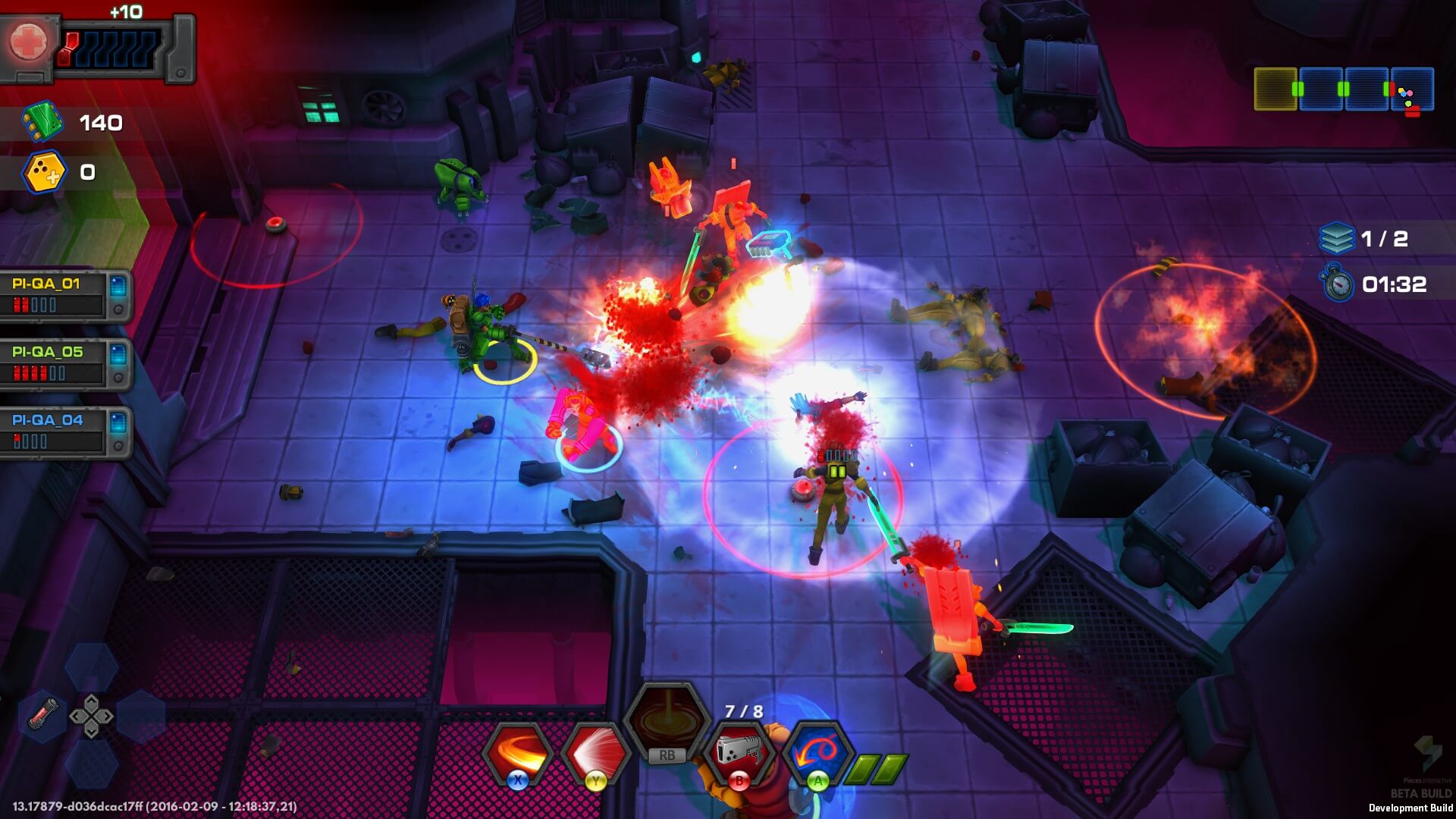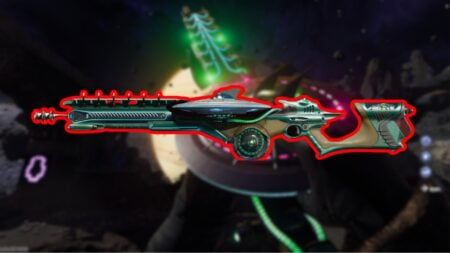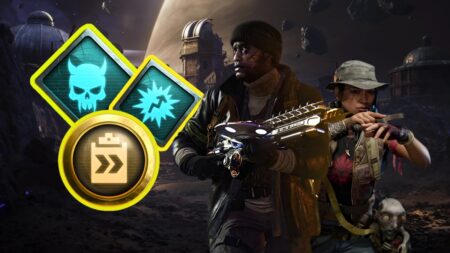Title: Kill to Collect
Version Tested: PC
Available On: PC
Developer: Pieces Interactive
Genre: Action, Rogue-like, Beat ‘Em Up
Official Site: Kill to Collect
Release Date: April 7, 2016
Where to Buy: Steam, Green Man Gaming, Playfield, The Humble Store
Kill to Collect. Even the name itself is a delight to say. A hectic shooter that markets itself as a rogue-like due to the difficulty implied in the title, this release was intended to be a multiplayer romp through a dystopian city, blasting enemies and hunting bounties. While it certainly delivers on a number of fronts, there is a certain sneaking failure that, while not the fault of the design itself, renders the actual experience into something that can only be described as hollow.
Despite this, it’s still a fantastic game that just needs more attention from more players – there’s a lot that Kill to Collect offers, and there should be a greater number of people taking advantage of it.
[embedyt] https://www.youtube.com/watch?v=kbhmsNK2E1Y[/embedyt]
[gap height=”15″]
The story of Kill to Collect is quite simple. The characters, each sporting a delightfully alliterative name, all share one thing is common: bounty-hunting. You can play a katana-wielding warrior, a shotgun-bearing ex-cop, a partially-robotic music-lover or, my personal favourite, a technologically-gifted scavenger. Each has their own reasons for completing the various bounty missions that make up the main story, but it all really comes down to three things: adventure, money and revenge. Not necessarily in that order.
These characters ramble around a series of levels in a huge Judge Dredd-like habitation unit, murdering as they go, trying to find each mission’s bounty target so they can bop them for the money. It’s simple, it’s satisfying, and there’s very little unnecessary exposition. It’s all about getting straight into the action.
What this translates to in terms of gameplay is also similarly simple. Each level is made up of a series of rooms that you must clear using your given character and their skills. Each character plays differently, offering different tactics and means of winning. Completing a room without taking any damage will grant you extra resources (used to purchase items and health) while optional challenge rooms along the way give players the chance to win some extra food stamps (used to purchase character upgrades).
All upgrades are temporary for that bounty, so there isn’t really that much progression. You will unlock new starting loadout of items by earning more cash, as well as new costumes, but in terms of gameplay, the actual money you earn doesn’t really seem to have much of a point. It’s a shame, as the whole idea of bounty hunting is sure to better your situation – something which you do not really get to experience. However, a game that is intended to be a rogue-like and thus infinitely replayable, this lack of emphasis on permanent upgrades is perhaps an intentional choice. Veterans of the game and newbies are essentially the same – it’s the skill that separates the men from the boys in Kill to Collect.

And you will need that skill if you want to beat out the myriad varieties of enemy you will encounter. While I wouldn’t say this game is as hard as the developers imply, it does present a healthy challenge. Foes vary from simple, axe-wielding melee characters that give you plenty of warning when they are going to swing, to little zippy robot bugs that shoot at you from afar. Flamethrower enemies, stunning enemies, teleporting enemies – they are all represented in Kill to Collect. Entering a room is a gamble, wondering what you are going to get next, particularly in Free Hunt mode. While story missions keep this variety confined to a given relevant pool, there is such a range even within levels that you will have to rapidly adapt your strategies on the fly.
Particularly when you face bosses. Bosses are the bounty targets, and they get given extra abilities on top of their base enemy class. Perhaps they can teleport or are extra quick, or something equally difficult to overcome, but so long as you play your class right, they are certainly able to be beaten on a first try. This isn’t Dark Souls – while the game does want to challenge you, and you will die every so often, it does not really make up the main gameplay feature. If you die, you start again, and you also still earn some cash depending on how far you got. It’s a healthy level of difficulty, and certainly one that I appreciate.
Even if you do die frequently, it’s hard to get angry about getting another chance to move through the levels. The art style for Kill to Collect is great, with a cartoonish, vibrant but still quite gritty feel. Blood spatters on the floor, people explode, violence is everywhere, but you still get the feeling that the art style wanted to make this game memorable for more than just the gore. It also works well with the gameplay, as the bright colours and over-exaggerated movements let you know exactly what a particular enemy is about to do. It’s a well-constructed 80’s cyberpunk style that has obviously had a lot of thought put into it.
The soundtrack is also at a top-notch level, with much of the movements of characters feeling like they are in time with the music. It almost becomes like a rhythm game, as you find your strikes and dashes falling in time with the dirty bass and electronic melodies. Sound effects themselves are solid, and much like the graphics, also serve a gameplay purpose by telegraphing where enemies are coming from and what they are about to do.

Unfortunately, Kill to Collect suffered from one major issue on the release: it was a ghost town. Very few people seemed to be playing online, and those that did attempt to open lobbies were initially confused on how to actually open the server to the public.
What this resulted in was a game that, while certainly fun to play solo, was next to impossible to play with anyone who wasn’t already on your friend’s list. A major part of the fun of this kind of hectic, top-down shooter is the fact that you get to experience it with others, but that wasn’t possible with Kill to Collect. Despite being an excellent game, with a lovely art style, well-balanced characters and genuinely interesting enemies, the curse of empty lobbies created a game that felt hollow. After all, it was intended to be played in a group, so if you can’t find one, much of the design and overall experience of playing is missed.
However, a lack of popularity does not a bad game make. Despite this issue, the rest of the game is fantastic. The levels end up being a little repetitive, true, but the enemies across levels are diverse, character play styles have enough difference between them to create replayability, and at least some of the multiplayer experience is kept through the use of challenges and online leaderboards.
Overall, would I recommend it? If you are looking for an unintentionally singleplayer game that is simple to pick up but hard to master, Kill to Collect could be right up your alley.
- Gameplay: Hectic, action-filled and ultimately extremely fun.
- Graphics: Lovely art style, plenty of colour and detail.
- Sound: Driving soundtrack and convincing effects.
- Presentation: Overall, extremely well-put together. Shame about the lack of players.
[review]






